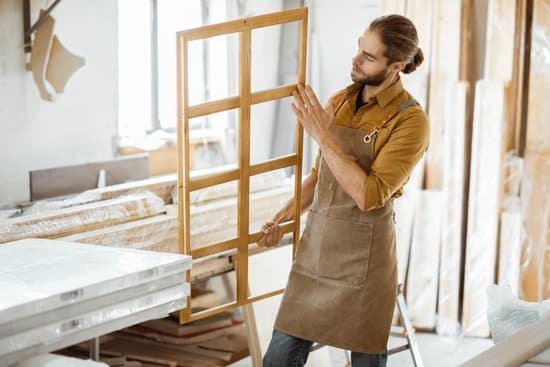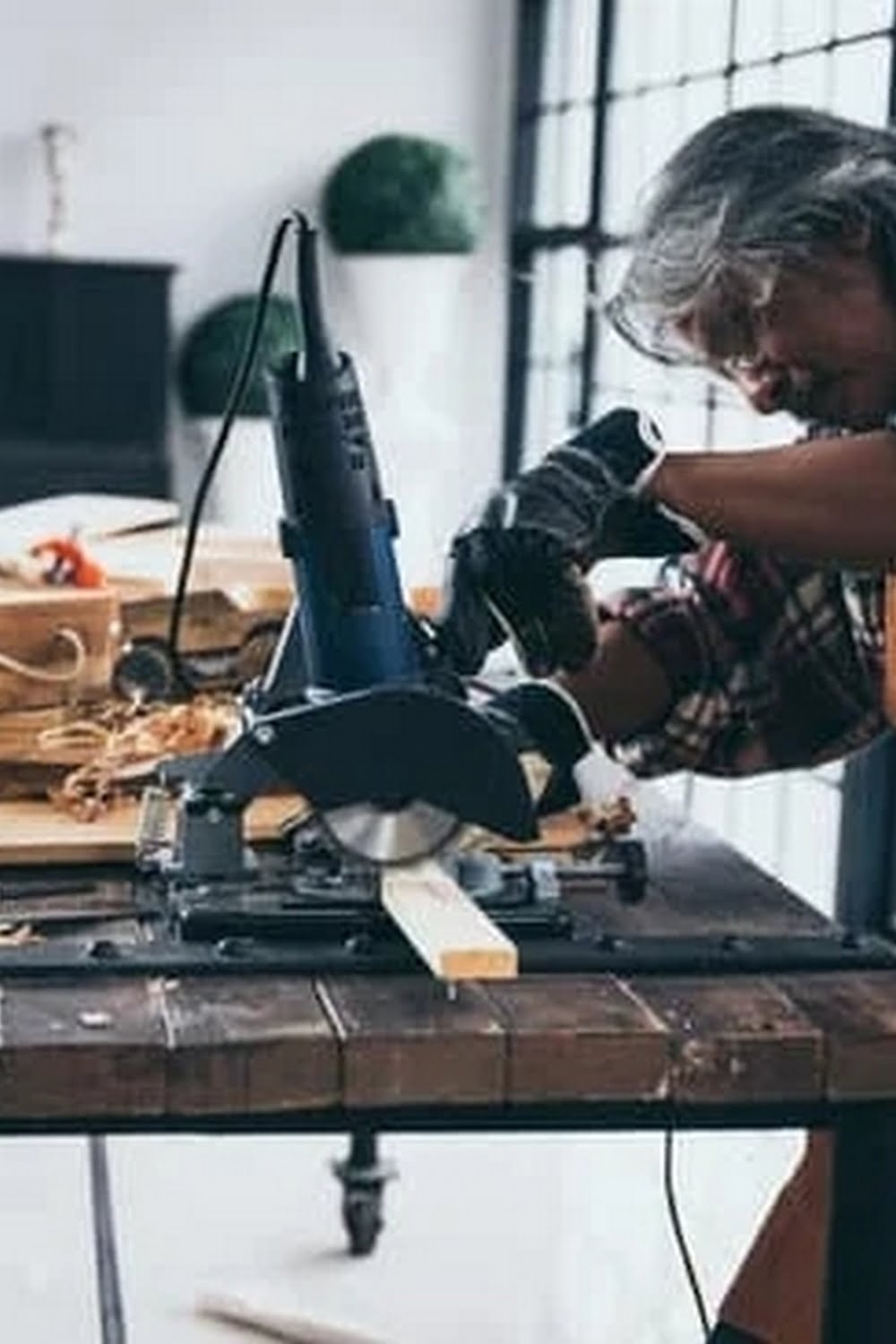Are you a woodworking hobbyist? This column could save your life. Woodworking is a rewarding and enjoyable hobby, but it’s important to prioritize safety while working with sharp tools and heavy machinery. In this article, we will explore the essential safety measures and gear that every woodworking enthusiast should know to prevent accidents and injuries in the workshop.
Woodworking involves a wide range of tools and equipment, from hand tools like chisels and saws to power tools such as routers and table saws. Unfortunately, accidents can happen if proper safety precautions are not followed. By understanding the common accidents and injuries in woodworking, hobbyists can take steps to minimize risks and protect themselves while pursuing their craft.
In addition to discussing the importance of safety in woodworking, we will also provide practical tips for creating a safe and organized woodworking space. From proper tool handling techniques to first aid for woodworking injuries, this section will cover all aspects of woodworking safety, ensuring that hobbyists can enjoy their craft without compromising their well-being. So let’s delve into the world of woodworking safety and ensure that every project is completed without incident.
Common Accidents and Injuries in Woodworking
Woodworking can be an enjoyable and fulfilling hobby, but it also comes with its fair share of risks and potential hazards. Understanding the common accidents and injuries that woodworking hobbyists may encounter is crucial in preventing them and ensuring a safe working environment. By being aware of these risks, you can take the necessary precautions to protect yourself and others in your woodworking space.
Common Accidents
One of the most common accidents in woodworking is cuts and lacerations from tools such as saws, chisels, and knives. These tools are sharp and require careful handling to avoid accidental injuries. Another frequent accident is related to flying debris or wood particles that could cause eye injuries if proper safety gear is not worn.
Injuries to Look Out For
In addition to cuts and eye injuries, woodworking hobbyists are also at risk for strains, sprains, and repetitive motion injuries from overexertion or improper lifting techniques. Furthermore, inhaling sawdust and other airborne particles can result in respiratory issues over time, making proper ventilation essential in a woodworking space.
Prevention Methods
To prevent these common accidents and injuries, it is important for woodworking hobbyists to prioritize safety at all times. This includes wearing appropriate safety gear such as goggles, gloves, and a dust mask when working with tools or around flying debris.
Additionally, following proper tool handling techniques and maintaining a clean and organized workspace can greatly reduce the risk of accidents. Being mindful of body mechanics when lifting heavy objects or operating power tools can also prevent strain-related injuries effectively.
By understanding the common accidents and injuries associated with woodworking, hobbyists can take proactive measures to mitigate these risks. Prioritizing safety through proper gear usage, workspace organization, and adherence to safety protocols could save lives while allowing woodworkers to continue enjoying their craft for years to come.
Essential Safety Gear for Woodworking Hobbyists
Woodworking hobbyists, like any other enthusiasts, should prioritize their safety when engaging in their craft. Whether you are a beginner or experienced woodworker, having the right safety gear can make a significant difference in preventing accidents and injuries. Here are some essential safety gear items that every woodworking hobbyist should have:
- Safety goggles: Protect your eyes from flying debris, sawdust, and other potential hazards with a pair of high-quality safety goggles.
- Hearing protection: Constant exposure to the noise generated by power tools can damage your hearing over time. Invest in earplugs or earmuffs to protect your ears while woodworking.
- Respirator mask: Woodworking generates a lot of dust particles that can be harmful when inhaled. A respirator mask will help filter out these particles and prevent respiratory issues.
- Gloves: Proper fitting work gloves offer protection against splinters, sharp edges, and other potential hand injuries while handling wood and tools.
- Steel-toe boots: When working with heavy machinery and potentially hazardous materials, sturdy steel-toe boots offer foot protection from accidental impacts or falling objects in the workshop.
In addition to these essential safety gear items, woodworking hobbyists should also consider investing in a fire extinguisher for their workshop as an added precaution. Having these safety gear items readily available can provide peace of mind and protection while pursuing your woodworking projects.
Proper outfitting with the necessary safety gear is crucial for woodworking hobbyists to minimize the risk of accidents and injuries. By incorporating these essential items into your woodworking routine, you are taking proactive steps to protect yourself from harm while pursuing your passion for crafting with wood. Remember, prioritizing safety in woodworking helps ensure that you can continue enjoying this fulfilling hobby for years to come.
Proper Tool Handling and Safety Tips
Woodworking can be an incredibly rewarding hobby, but it also comes with its fair share of risks. Without the right precautions, accidents can happen, resulting in serious injuries. That’s why it’s crucial for woodworking hobbyists to prioritize safety when working with tools. Here are some essential tips for proper tool handling and safety in woodworking that could save your life.
Always Wear Personal Protective Equipment (PPE)
One of the most important safety measures in woodworking is wearing the right personal protective equipment (PPE). This includes safety goggles to protect your eyes from flying debris, ear protection to minimize noise exposure, a dust mask to prevent inhalation of wood particles, and appropriate clothing to avoid getting entangled in machinery. Additionally, sturdy work gloves can provide added protection when handling sharp or rough materials.
Properly Maintain and Inspect Tools
Before starting any woodworking project, it’s essential to inspect all your tools for any signs of damage or wear. Make sure that blades are sharp and free from rust, handles are secure, and electrical cords are intact. Keeping your tools well-maintained not only ensures optimal performance but also reduces the risk of accidents caused by malfunctioning equipment.
Use Tools According to Manufacturer Guidelines
Every woodworking tool comes with specific instructions for safe operation provided by the manufacturer. It’s crucial to familiarize yourself with these guidelines and use each tool accordingly. Don’t use a tool for a purpose other than what it was designed for, as this could result in accidents or injuries. Following manufacturer recommendations guarantees safer tool handling and a reduced risk of mishaps.
By implementing these proper tool handling and safety tips into your woodworking practices, you’ll significantly decrease the likelihood of accidents while working on your projects. Remember that prioritizing safety is key to enjoying this hobby for years to come.
First Aid for Woodworking Injuries
Woodworking can be a fulfilling and enjoyable hobby, but it’s important to prioritize safety in every project. Accidents and injuries can happen, so being prepared with the knowledge of first aid for woodworking injuries is essential. Whether you’re working with hand tools or power tools, understanding how to provide immediate care for common woodworking injuries could make a huge difference in the outcome.
Here are some first aid tips for woodworking injuries:
- Minor cuts and scrapes: Clean the wound with soap and water, apply an antiseptic ointment, and cover it with a sterile bandage.
- Splinters: Use tweezers to carefully remove the splinter, clean the area, and apply an antibacterial cream. Keep the area covered with a bandage to prevent infection.
- Bruises and sprains: Apply a cold compress to reduce swelling and pain. Elevate the injured area if possible, and consider using a compression bandage for added support.
In addition to these first aid measures, it’s important to seek professional medical attention for more serious injuries such as deep cuts, eye injuries, or burns from power tools. Taking a proactive approach to safety includes knowing when to call for help when an injury occurs. Remember that proper first aid could make all the difference in promoting healing and preventing further complications.
Woodworking injuries should never be taken lightly, so having knowledge of first aid techniques specific to these types of injuries is crucial. Being prepared could mean the difference between a speedy recovery and long-term consequences from an untreated injury on your projects.
Tips for Creating a Safe and Organized Woodworking Space
When it comes to woodworking, having a safe and organized workspace is essential to prevent accidents and injuries. One of the first steps in creating a safe woodworking space is to ensure that your work area is well-lit and free from clutter.
Good lighting not only helps you see what you’re doing more clearly, but it also reduces the risk of accidents caused by poor visibility. Additionally, keeping your workspace organized can help prevent tripping hazards and make it easier to find the tools and materials you need.
Another important aspect of creating a safe woodworking space is to have proper ventilation. Woodworking often involves working with various chemicals and dust that could pose health risks if inhaled. Ensuring good ventilation in your workspace can help reduce the risk of respiratory issues associated with woodworking.
Furthermore, it’s crucial to have designated areas for different tasks within your woodworking space. This could include separate areas for cutting, sanding, assembly, and finishing. By having dedicated spaces for each task, you can minimize the risk of cross-contamination between materials and processes. It also helps create a more organized and efficient workflow.
| Aspect | Recommendation |
|---|---|
| Lighting | Ensure good lighting in the workspace. |
| Ventilation | Have proper ventilation to reduce health risks. |
| Organization | Create designated areas for different tasks. |
Ways to Prevent Accidents and Injuries in Woodworking
Woodworking can be a rewarding and fulfilling hobby, but it’s important to prioritize safety in order to prevent accidents and injuries. One of the most crucial ways to prevent accidents is by being mindful of your surroundings and eliminating potential hazards in your woodworking space.
By keeping your workspace clean and organized, you can reduce the risk of tripping over tools or materials. Additionally, ensuring that all power cords are properly secured and out of the way can prevent dangerous trips and falls.
Another key aspect of accident prevention in woodworking is proper tool maintenance. Regularly inspecting your tools for any signs of wear or damage could save your life. Dull blades, loose components, or malfunctioning power tools can increase the risk of accidents. Checking and maintaining your tools on a regular basis will not only keep them in good working condition but also reduce the likelihood of unexpected mishaps.
In addition to maintaining a safe workspace and tools, it’s essential to stay informed about best safety practices in woodworking. Staying up-to-date with safety guidelines from reliable sources could save your life. Whether through woodworking forums, safety training courses, or instructional videos from experienced woodworkers, there are many resources available to help you stay informed and aware of potential hazards in woodworking.
Resources for Woodworking Safety Training and Education
In conclusion, as a woodworking hobbyist, the importance of safety in your craft cannot be overstated. Accidents and injuries can happen in an instant, but with the right knowledge and precautions, you can prevent them from occurring. From wearing essential safety gear to properly handling tools and creating a safe workspace, there are many ways to reduce the risk of harm while pursuing your passion for woodworking.
Learning about first aid for woodworking injuries is also crucial. In the event that an accident does occur, knowing how to provide immediate care could make all the difference. Additionally, seeking out resources for woodworking safety training and education can further equip you with the knowledge and skills needed to stay safe in your woodworking endeavors.
Ultimately, by implementing the tips and guidelines outlined in this article and continuously seeking opportunities for learning and improvement through resources for woodworking safety training and education, you can minimize the potential risks associated with woodworking. Taking these proactive steps not only safeguards your physical well-being but also allows you to enjoy your hobby to the fullest without unnecessary worry or fear.
So as a woodworking hobbyist, let this column help save your life by prioritizing safety every time you pick up your tools.
Frequently Asked Questions
What Are the Psychological Benefits of Woodworking?
Woodworking offers numerous psychological benefits, including stress reduction, improved mood, and increased sense of accomplishment. Engaging in woodworking activities allows individuals to focus their attention and creativity on a specific project, which can act as a form of mindfulness and relaxation.
The process of shaping wood with hand tools or machinery also provides a sense of achievement and pride in creating something with one’s own hands.
Is Woodworking Good for the Brain?
Yes, woodworking is considered to be good for the brain. It requires problem-solving skills, spatial awareness, attention to detail, and the ability to follow multi-step instructions – all of which stimulate the brain and help maintain cognitive function.
Engaging in woodworking activities also promotes hand-eye coordination and fine motor skills, which are essential for maintaining dexterity as we age.
Can You Make a Living From Woodworking?
It is possible to make a living from woodworking. Many people have turned their passion for working with wood into successful businesses by selling handmade furniture, crafts, or custom-built items.
Additionally, there are opportunities for skilled woodworkers in construction trades, carpentry, cabinetry, and restoration work. With dedication, business acumen, and high-quality craftsmanship, it is indeed possible to earn a living through woodworking.

Hi everyone! I’m a woodworker and blogger, and this is my woodworking blog. In my blog, I share tips and tricks for woodworkers of all skill levels, as well as project ideas that you can try yourself.





